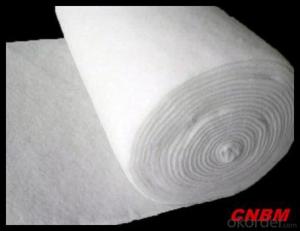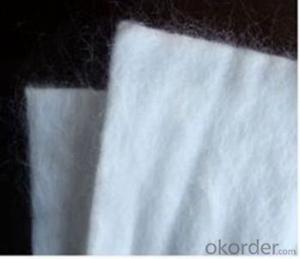Non-woven Geotextile Fabric Manufacturers for Highway
- Loading Port:
- China main port
- Payment Terms:
- TT OR LC
- Min Order Qty:
- 1000 m²
- Supply Capability:
- 400000 m²/month
OKorder Service Pledge
OKorder Financial Service
You Might Also Like
Item specifice
Product Introduction
woven manufacturers non woven fabric
non woven fabric manufacturer, non woven fabric suppliers , spunlace non woven fabric manufacturers ,
China non woven fabric manufacturers,pp non woven geotextile fabric,needlepunch&spunlace nonwoven,non woven polypropylene,manufacturers&wholesale suppliers in china.
If the selection of a larger melt index similar to the nonwoven fabric masterbatch melt index of the polymer is significantly higher than the polymer in order to ensure that the final product colors together. PE, PP woven masterbatch select LDPE (low density polyethylene) resin as the carrier, PS, ABS modified PS nonwoven masterbatch for the carrier selection.
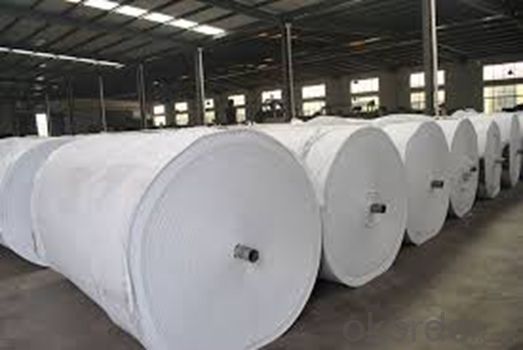
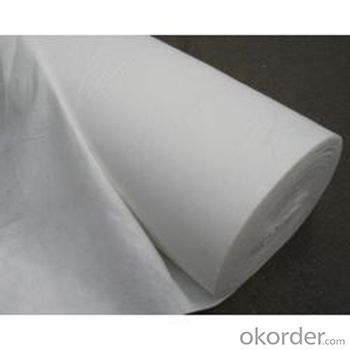
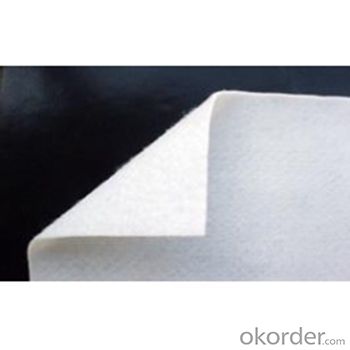
Quality assurance
1.On a regular basis or as per your request,we entrust national testing agencies to conduct quality inspections
2. Strictly in accordance with the ISO9001-2008 international quality system standard,we monitor and manage the whole process throughout production,quality testing,and measurement to ensure product quality
3. For quality-related construction delay or substandard construction(except for damage or losses due to customer’s responsibility or irresistible natural disasters),we have refunding,replacement,and repair services.We will respond to customers’ feedbacks on quality issues within 24 hours.
Packaging & Shipping
Packing: PLASTIC FILM INSIDE, AND WOVEN BAG OUTSIDE
Shipping: About 15 days after receipt the deposit
pecifications
geotextile fabric
permeability,filtration,easy for construction
ISO and CE certificate
Good quality and competitive price
Our Service
FAQ:
Q: What kind of payments does jenor support?
A: T/T, L/C, Cash are accepted.
Q: Do you charge for the samples?
A: Accordeing to our company policy, the samples are free, we only charge the freight fee. And we will return the freight fee during the next order.
Q: Can you produce according to customers' design?
A: Sure, we are professional manufacturer, OEM and ODM are both welcome.
Q: Do you have other products?
A: Yes, please check the pictures:
- Q:What are the different installation guidelines for geotextiles in reinforcement projects?
- The installation guidelines for geotextiles in reinforcement projects typically involve the following steps: 1. Site Preparation: Clear the construction area of any vegetation, debris, or loose soil. Level the ground and remove any protrusions or sharp objects that could damage the geotextile. 2. Geotextile Placement: Unroll the geotextile over the prepared area, ensuring it covers the entire project site. Overlaps between adjacent rolls should be at least 1 to 2 feet to provide proper continuity. 3. Anchoring: Secure the geotextile at the edges using anchor trenches, stakes, or other appropriate methods to prevent movement during installation or in the long term. 4. Jointing: Overlap adjacent geotextile panels by a minimum of 1 to 2 feet, depending on the project requirements. Secure the overlap with appropriate fasteners or adhesives to ensure proper functioning. 5. Protection: If necessary, cover the geotextile with a protective layer, such as a layer of soil or aggregate, to shield it from potential damage during construction activities or exposure to UV radiation. 6. Compaction: If the project involves soil stabilization or reinforcement, follow the recommended compaction procedures to ensure proper integration of the geotextile with the surrounding soil or aggregate. 7. Quality Control: Regularly inspect the geotextile installation to ensure that it is properly placed, free of damage, and functioning as intended. Any identified issues should be addressed promptly. It is important to note that specific installation guidelines may vary depending on the project type, site conditions, and the type of geotextile being used. It is recommended to consult the manufacturer's recommendations and seek professional guidance to ensure proper installation.
- Q:Are geotextiles suitable for use in geocell retaining walls?
- Yes, geotextiles are suitable for use in geocell retaining walls. Geotextiles help in enhancing the structural stability of the geocell walls by providing soil confinement, filtration, and erosion control. They prevent soil migration, improve drainage, and increase load-bearing capacity, making geotextiles an ideal choice for reinforcing geocell retaining walls.
- Q:Can geotextiles be used in geogrid reinforced slopes?
- Yes, geotextiles can be used in geogrid reinforced slopes. Geotextiles are often used in combination with geogrids to provide additional reinforcement and prevent soil erosion in reinforced slopes. They help to distribute the load and improve the stability of the slope by acting as a separation layer between the soil and the geogrid.
- Q:5KN or 50KN
- I answered someone else on this question 1. multiply the 1.5th of the expected value of the geotextile sample by the size of the geometric cloth. 2. If you do not know the expected value, it should have a standard tensile strength range, with the tensile strength multiplied by the cross-sectional area of geotextile (thick by the width) to find the force value. 3. If you do not know, it is recommended to choose 50KN or 100KN equipment. Of course, if you need to test the geotextile was cut into a width that is particularly small, then you can use a small amount of force, but it is recommended if you choose from 5KN and 50KN election 50KN good.
- Q:What is the geotextile customs code?
- Hello: I can only give an example: if you ask the goods belong to the weight per square meter of more than 150 grams of non-woven weaving, can be returned, because you do not have a detailed description of the source of raw materials, production processes, Into the product code under 5603.1410. If you are satisfied with my answer, I would like to be accepted and given praise, thank you!
- Q:How are geotextiles used in erosion control?
- Geotextiles are used in erosion control by providing a protective barrier against soil erosion. They are placed on the ground surface or buried within the soil to prevent or minimize the loss of soil particles due to water flow or wind. Geotextiles help stabilize the soil by improving its strength and reducing the movement of sediments, thus preventing erosion from occurring.
- Q:How do geotextiles improve the performance of pavement structures?
- Geotextiles improve the performance of pavement structures by providing separation, filtration, and reinforcement. They prevent the mixing of different soil layers, allowing each layer to function independently and efficiently. Geotextiles also act as a filter, preventing the clogging of underlying drainage systems by allowing water to pass through while retaining the soil particles. Furthermore, they reinforce the pavement, distributing the load more evenly and reducing the potential for rutting and cracking. Overall, geotextiles enhance the durability, stability, and longevity of pavement structures.
- Q:Supply Tianhe District staple geotextile and anti-geotextile what is the same
- Staple geotextile is made of polyester staple fiber by acupuncture, because it can play the role of anti-filtration, and thus staple geotextile can also be called anti-geotextile. Filter geotextile is based on the use of the name, so long as it is able to play the role of anti-filter geotextile called geotextile filter, geotextile, including geotextile geotextile, filament geotextile, the preparation of geotextile, Woven geotextile, non-woven geotextile, polypropylene geotextile. Tianhe District used staple geotextile and anti-filter geotextile is the same.
- Q:What are the specifications for geotextiles in railway projects?
- The specifications for geotextiles in railway projects typically include factors such as the tensile strength, puncture resistance, elongation properties, and durability of the material. The geotextile should also have the ability to separate and stabilize the soil layers, provide filtration to prevent soil fines from clogging drainage systems, and possess adequate permeability to allow for efficient water drainage. Additionally, geotextiles used in railway projects must meet certain standards for dimensional stability and resistance to environmental factors such as UV radiation and chemical degradation.
- Q:Thank you, great gods
- Polyester short wire, polyester filament, polypropylene geotextile, filament woven geotextile, and so on. I professional production geotextile geomembrane and other geotechnical materials, a professional construction of the welding team, wish smooth
1. Manufacturer Overview |
|
|---|---|
| Location | |
| Year Established | |
| Annual Output Value | |
| Main Markets | |
| Company Certifications | |
2. Manufacturer Certificates |
|
|---|---|
| a) Certification Name | |
| Range | |
| Reference | |
| Validity Period | |
3. Manufacturer Capability |
|
|---|---|
| a)Trade Capacity | |
| Nearest Port | |
| Export Percentage | |
| No.of Employees in Trade Department | |
| Language Spoken: | |
| b)Factory Information | |
| Factory Size: | |
| No. of Production Lines | |
| Contract Manufacturing | |
| Product Price Range | |
Send your message to us
Non-woven Geotextile Fabric Manufacturers for Highway
- Loading Port:
- China main port
- Payment Terms:
- TT OR LC
- Min Order Qty:
- 1000 m²
- Supply Capability:
- 400000 m²/month
OKorder Service Pledge
OKorder Financial Service
Similar products
New products
Hot products
Hot Searches
Related keywords

